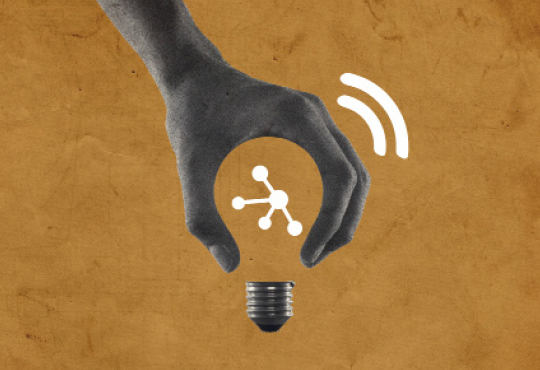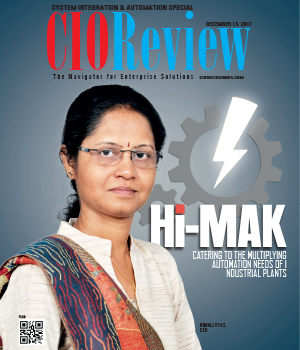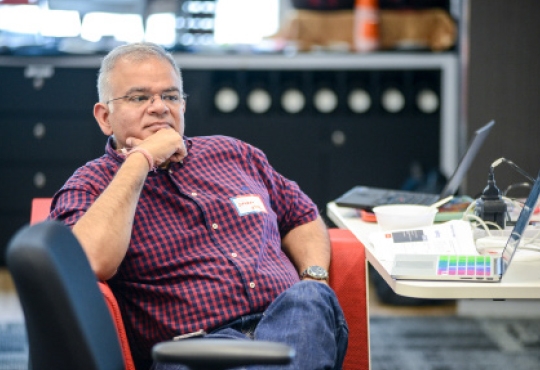
Achieving Best Return on IoT and Innovation
T.G. Dhandapani, Former Group CIO, TVS Motor Company | Friday, 15 December 2017, 09:02 IST
 Most of the Automakers and ancillaries have adopted IoT in some form are other. The investment in IoT initiative is basically to increase automation, process quality, traceability and compliance. IoT enables improvement in overall equipment efficiency by preventing breakdowns through predictive maintenance. With IoT, overall productivity can be increased at plant level by about 20 percent. Auto OEMs are using IoT for connecting vehicles. Connected vehicle technology is a silver bullet providing benefits to many stakeholders in the supply chain. Improved maintenance service, understanding the usage pattern of the vehicles for design optimization, provide security for vehicle financiers, discriminate insurance premium based on vehicle riding pattern, remote servicing of the vehicles, closer customer connections are some of the areas in automobile industries that are exploited. Innovation is the key to reap the benefits further.
Most of the Automakers and ancillaries have adopted IoT in some form are other. The investment in IoT initiative is basically to increase automation, process quality, traceability and compliance. IoT enables improvement in overall equipment efficiency by preventing breakdowns through predictive maintenance. With IoT, overall productivity can be increased at plant level by about 20 percent. Auto OEMs are using IoT for connecting vehicles. Connected vehicle technology is a silver bullet providing benefits to many stakeholders in the supply chain. Improved maintenance service, understanding the usage pattern of the vehicles for design optimization, provide security for vehicle financiers, discriminate insurance premium based on vehicle riding pattern, remote servicing of the vehicles, closer customer connections are some of the areas in automobile industries that are exploited. Innovation is the key to reap the benefits further.
There are two sets of benefits in implementing IT. First one is strategic usage of ERP like inventory planning, production plan and scheduling, Total Productive Maintenance, cost control and Governance. ERP is a strategic initiative for organisation to do better planning, increase predictability and optimize the utilization of resources. By now most of the large organizations have adopted ERP. Mere implementation of ERP and taking Invoice print out from the ERP system is not adequate. More usage of ERP by all employees, bringing innovation in the business process to increase productivity and quality are the key. Though ERP is used in many organizations, the extent of usage hasn’t crossed beyond transaction processing. At best, in the best of the companies, ERP is exploited up to 30 percent of its potential. The usage of ERP for strategic and operational benefits will increase if instead of just hygiene transaction processing, top management starts reviewing on-line from ERP instead of PPT.
Second is adoption of technologies like IoT. At base level, productivity and quality improvement will accrue and be sufficient to satisfy Financial Controllers. Like any other IT project IoT should also be driven in an organization with vision in mind. It can be either for solving any business problem or creating new opportunity for opening a new channel for revenue. All said and done the Jackpot is in the data gathered during IoT. If rightly used, data collected over a period of time and good analytics platform will lead way to initiate strategies and earn continuous revenues. IoT is a means to the end. The goal is improvement in business performance in terms of revenue, quality or customer satisfaction. Therefore continuous improvement and innovation will take the organization to the positive spiral.
Sequencing complex technologies with corresponding skill levels
Starting in small is always good to gain good appetite. Based on the organizations thirst, the suitable technologies can be adopted. Autonomous robots are used in assembly, welding and testing areas and also in areas where it may be inappropriate to use humans considering safety. AR is used to visualize simulations and in maintenance areas to do better service. Mere introduction of a technology will not be correct. An organization should be in a position to derive appropriate ROI out of the investment. Investment in AI and Robotics are at this stage, is quite high added to high operation cost and maintenance. Hence there is some hesitance for investment. No doubt with the increase in the deployments of number of robots, adequate skill to maintain and service the devices will improve.
Overcoming mindset and technological barriers
There are few top barriers that will create challenges for manufacturers as they begin to upgrade to the IoT. These barriers include the increasing threat of a cyber attack, difficulty determining ROI and technical difficulty integrating the IoT into a factory. The worst challenge is the mindset. Once an organisation overcomes it, there are technologies available for integration. Another hindrance is the age of the organisation. Most of the manufacturing organisations are more than three decades old. Every organisation will have devices and equipment, working well but not capable of IoT adoption. One should go very carefully in these cases as technology for the sake of implementing will take the organisation to negative spiral. Of course Security is the major area to attend to. That is the reason many organization start on small investment to gain confidence. Maintenance and operating skill availability is also limited in the industry at present.
CIO Viewpoint
By Ashok Jade, CIO, Shalimar Paints
Big Data Analytics - Connected Cars and Digital...
By Vishal Sinha, President & CIO, TranzLease Holdings
Achieving Best Return on IoT and Innovation
By T.G. Dhandapani, Former Group CIO, TVS Motor Company
CXO Insights
The Mobile-First Mentality Opportunities in the...
By Sanket Atal, Group Vice President, Oracle
Enterprise Automation - Need, Drivers and Ways...
By Dhiraj Kukreja, Senior Vice President, ADM Head, NIIT Technologies
The Untapped Value of Predictive Technology and...






